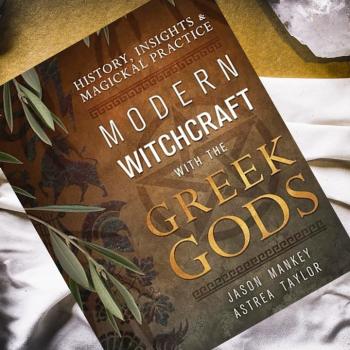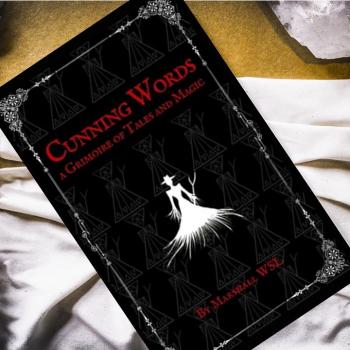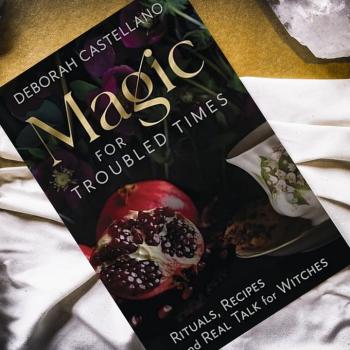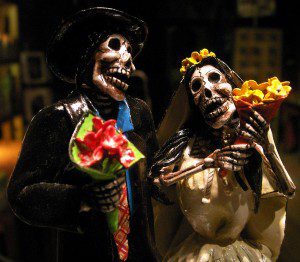 What can a naturalist celebrate in November?
What can a naturalist celebrate in November?
This post is part of Naturalistic Traditions, a column exploring naturalism in Pagan ways. This column will cover seasonal celebrations, historical and contemporary movements, and ritual practices.
Natural Cycles
For places in the northern hemisphere with four seasons, autumn is giving way to the coming winter. The last leaves cling to the branches or fall, and the harvest is near completion.
As for lunar cycles, the 13th will see a new moon, with a full moon on the 28th.
Neopagan Traditions
In the Northern Hemisphere, the cross-quarter is celebrated as Samhain, the Pagan new year and origin of modern Halloween. This year, the date falls on November 6th. The precise date and time for the cross-quarter can be found at archaeoastronomy.com.
According to Mike Nichols, Samhain means “summer’s end” and marked the conclusion of the summer in the old two-fold division of the year. In the new four-fold division, it is the end of autumn and beginning of winter. The pronunciation of the name of this originally Celtic festival varies:
Samhain is pronounced (depending on where you’re from) as “sow-in” (in Ireland), or “sow-een” (in Wales), or “sav-en” (in Scotland), or (inevitably) “sam-hane” (in the U.S., where we don’t speak Gaelic).
Nichols calls it “the most important holiday of the year.” It is a day of the dead:
As a feast of the dead, this was the one night when the dead could, if they wished, return to the land of the living, to celebrate with their family, tribe, or clan. And so the great burial mounds of Ireland (sidhe mounds) were opened up, with lighted torches lining the walls, so the dead could find their way. Extra places were set at the table and food set out for any who had died that year. And there are many stories that tell of Irish heroes making raids on the Underworld while the gates of faery stood open, though all must return to their appointed places by cockcrow.
Since ancient concepts of time were cyclical rather than linear, Nichols says, this moment between the old year and the next is “outside of time” and hence “the night par excellence for peering into the future.” A naturalist may take this moment for divination, not in the sense of literally seeing the future, but seeing within: contemplating one’s potential for future action.
In a similar vein, Glenys Livingstone of Pagaian has her ritual participants bring photos of their old selves, and answer the question: “Who have you been?” The participant holds up the photo and describes the old self, to which the group responds: “Hail to you and your becomings.”
The participants also remember those who have passed on, sharing a feast of lolly snakes while observing:
“We welcome all these, whose lives have been harvested, whose lives have fed our own, and we remember that we too will be consumed, feed others with our lives. May we be interesting food. We also become the ancestors. We are the ancestors.”
Jon Cleland Host of the Naturalistic Paganism yahoo group relates Samhain to events in evolutionary history:
Just as Samhain heralds the dark quarter of the year (Samhain to Imbolc) and then the cold quarter of the year (Yule to Ostara), the Cretaceous extinction started with the dark cloud of ejecta from the asteroid impact, followed by the deadly freeze of a “nuclear” winter. Samhain also works well to commemorate extinction, which has been the fate of over 99.99% of all species that have existed on earth.
He then develops these observations into a seasonal practice:
These extinctions have made room for new species (such as us), and death makes room for new life. Samhain is thus the time to express our gratitude to those who have gone before us, those who have made our lives possible, those who have influenced us, and those who we remember. For this reason our ritual usually includes tributes to our ancestors and others. Photos of the dead can be given a place of prominence leading up to Samhain, and all can be especially remembered, even spoken to, if you like. The meditation to our ancestors can be read (see separate upload [in the Naturalistic Paganism files section] for that).
Finally, Host notes that Samhain is also a time for fun:
Samhain (Halloween) parties are good, as is trick-or-treating, bobbing for apples, and decorating. Colors are black, orange, tombstone gray and sometimes bone (off white).
Meanwhile, those in the Southern Hemisphere experience this time as Beltaine.
Civic and Scientific Traditions
November 1st is Carl Sagan Day (thanks to fellow Patheos blogger Chana for this one). You can celebrate the late popularizer of science at the Chicago event, or plan your own in your local area. In either case, you must not fail to enjoy some apple pie. Why apple pie? It comes from Sagan’s famous quote:
“If you wish to make an apple pie from scratch, you must first invent the universe.”
Speaking of Sagan, his Cosmic Calendar (illustrated as a comic strip here), which maps the entire history of our cosmos onto a single year, witnesses a milestone of evolution in November. On the 2nd, we see the emergence of eukaryotes, or cells with nuclei:
All large complex organisms are eukaryotes, including plants, animals, and fungi.
… Eukaryotes represent a tiny minority of all living things; even in a human body there are 10 times more microbes than human cells. However, due to their much larger size their collective worldwide biomass is estimated at about equal to that of prokaryotes. (Wikipedia)
Paul Harrison’s Elements of Pantheism notes three other noteworthy days this month: the International Day of Tolerance, Spinoza’s birthday, and John Toland’s birthday.
The 16th is the International Day of Tolerance, a UN event to raise awareness of the dangers of intolerance. The official website observes:
…tolerance is neither indulgence nor indifference. It is respect and appreciation of the rich variety of our world’s cultures, our forms of expression and ways of being human. Tolerance recognizes the universal human rights and fundamental freedoms of others. People are naturally diverse; only tolerance can ensure the survival of mixed communities in every region of the globe.
It further asserts that fighting tolerance requires: 1) law, 2) education, 3) access to information, 4) individual awareness, and 5) local solutions.
The 24th is the birthday of Baruch Spinoza (1632-1677), the Jewish-Dutch philosopher who opposed mind-body dualism and identified God with nature:
Spinoza contends that “Deus sive Natura” (“God or Nature”) is a being of infinitely many attributes, of which thought and extension are two. His account of the nature of reality, then, seems to treat the physical and mental worlds as one and the same. The universal substance consists of both body and mind, there being no difference between these aspects. This formulation is a historically significant solution to the mind-body problem known as neutral monism. Spinoza’s system also envisages a God that does not rule over the universe by providence, but a God which itself is the deterministic system of which everything in nature is a part. Thus, according to this understanding of Spinoza’s system, God would be the natural world and have no personality. (Wikipedia)
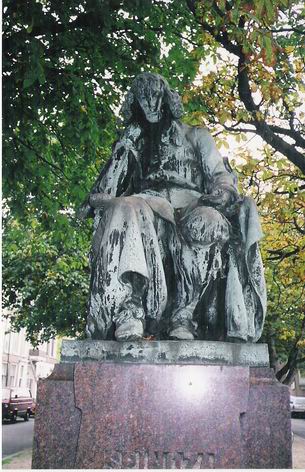 Spinoza’s deterministic philosophy was meant to bring happiness through knowledge and reason. By acknowledging everything as a necessary part of the universe, we may embrace life joyously.
Spinoza’s deterministic philosophy was meant to bring happiness through knowledge and reason. By acknowledging everything as a necessary part of the universe, we may embrace life joyously.
While Spinoza is widely claimed as a pantheist, the term was only later coined by John Toland (1670-1721), whose birthday is November 30th. Paul Harrison describes him:
Toland was the first modern pantheist to combine a religious reverence for the Universe, with respect for science, and a belief that everything is made of matter. A pantheist, he wrote to the German philosopher Leibniz, was one of those persons “who believe in no other eternal being but the universe.” When asked for a brief statement of his credo, Toland replied, “The sun is my father, the earth my mother, the world is my country and all men are my family.”
About the author
B. T. Newberg has been practicing meditation and ritual from a naturalistic perspective since 2000. After experimenting with Agnosticism, Buddhism, Contemporary Paganism, and Spiritual Humanism, he currently combines the latter two into a dynamic path embracing both science and myth. He is the editor of a community blog for naturalistic spirituality called Humanistic Paganism, which just published an anthology called Year One with over a dozen contributing authors. After growing up in Minnesota, and living in England, Malaysia, and Japan, B. T. Newberg currently resides in South Korea with his wife and cat.







